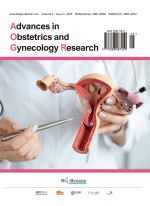Knowledge and Acceptability of Water Birth Among Chinese Women in Taian City, Shandong Province
Abstract
Objective: This study explored the level of expertise and acceptability of water birth among Chinese women in Taian City, Shandong Province. Methods: A descriptive correlational research design was used. One hundred six women of reproductive age (18–35 years old) from a selected community in Taian City were surveyed using a validated Water Birth Knowledge Questionnaire and Water Birth Acceptability Questionnaire, both based on the Theory of Planned Behavior (TPB). Statistical tools such as frequency, percentage, mean, standard deviation, and Spearman’s rank correlation coefficient were applied for data analysis. Results: Findings revealed that most participants had moderate knowledge of water birth, particularly regarding its benefits, but lacked understanding of the risks and procedural details. Acceptability levels were generally positive, especially in attitude and behavioral intention. A significant correlation (p < 0.05) between knowledge and acceptability was found. Educational level and monthly income were significantly associated with higher learning and greater acceptability of water birth. Conclusion: Increased knowledge of water birth does not necessarily lead to greater acceptance; it may instead foster more cautious decision-making.
References
Nazir I, Alzhrani E, Althobaity R, et al., 2020, Assessment of Knowledge Regarding Water Birth Among Medical Students of Clinical Years in the College of Medicine, Taif University. International Journal of Medicine in Developing Countries, 4(12): 2267–2273.
Guo L, Xing Z, Wu J, et al., 2020, Effects of Pelvic Floor Rehabilitation Training on Postpartum PFD of Water Birth. Chinese Journal of Clinical Research, 33(9): 1239–1242.
Bovbjerg M, Cheyney M, Caughey A, 2021, Maternal and Neonatal Outcomes Following Waterbirth: A Cohort Study of 17,530 Waterbirths and 17,530 Propensity Score-Matched Land Births. BJOG: An International Journal of Obstetrics & Gynaecology, 129(6): 950–958.
Vidiri A, Zaami S, Straface G, et al., 2022, Waterbirth: Current Knowledge and Medico-Legal Issues. Acta Bio Medica: Atenei Parmensis, 93(1): e2022077.
Zhong Z, Li Z, 2023, Research Progress of Water Birth Analgesia Therapy. Modern Diagnosis and Treatment, 34(12): 1780–1783 + 1806.
Zhang J, Chen W, Wang L, et al., 2020, Meta-Integration of Qualitative Research on the Real Experience of Water Birth in Puerpera. Chinese General Practice Nursing, 18(36): 5035–5040.
Li H, Chen P, Chen H, et al., 2020, Effect Evaluation of Two Labor Analgesia Methods With Doula Services. Preventive Medicine, 32(8): 778–781.
Snapp C, Stapleton S, Wright J, et al., 2020, The Experience of Land and Water Birth Within the American Association of Birth Centers Perinatal Data Registry, 2012–2017. The Journal of Perinatal & Neonatal Nursing, 34(1): 16–26.
Li Y, Guo Q, Liu Q, 2023, Clinical Practice Status and Thinking of Pregnant Women in Waterbirth. Chinese Journal of Birth Health & Heredity, 31(7): 1508–1511.
Zhong X, Wang X, 2021, Effect of Waterbirth on Duration of Labor and Postpartum Outcomes: A Meta-Analysis. Chinese Nursing Research, 35(5): 815–822.
Zou Z, Xie J, Yao J, 2020, Analysis of the Effect of Evidence-Based Nursing in the Care of Patients With Water Births. Capital Food Medicine, 27(9): 2.
An L, Lu H, 2017, Obstetric and Gynecological Nursing. People’s Medical Publishing House Co., Ltd., Beijing.
Burns E, Feeley C, Hall P, et al., 2022, Systematic Review and Meta-Analysis to Examine Intrapartum Interventions, and Maternal and Neonatal Outcomes Following Immersion in Water During Labour and Waterbirth. BMJ Open, 12(7): e056517.
Garcia L, Vanderlaan J, Kamanga F, et al., 2023, Content Analysis of Water Birth Policies With Implications for Practice and Research. Nursing for Women’s Health, 27(4): 250–261.
Bashaikh S, Mahboub F, Orabi A, 2022, Perception and Knowledge of Saudi Women About Water Birth: A Cross-Sectional Study. Belitung Nursing Journal, 8(5): 422–430.
Xing Z, Wu J, Guo L, et al., 2021, Effects of Labour in Water and Traditional Labour on Pelvic Floor Muscle Myoelectricity, Pelvic Floor Muscle Pressure, and Fibromuscular Strength. Journal of Bengbu Medical College, 46(3): 317–319 + 324.
Sharifipour P, Kheirkhah M, Rajati M, et al., 2022, The Effect of Delivery Ball and Warm Shower on the Childbirth Experience of Nulliparous Women: A Randomized Controlled Clinical Trial. Trials, 23(1): 391.
Cha J, Song H, Mao Q, 2019, The Effect of Water Birth on Perinatal Pregnancy Outcomes in Low-Risk Women. Chinese Journal of Clinical Obstetrics and Gynecology, 2019(3): 249–250.
Carlsson T, Ulfsdottir H, 2020, Waterbirth in Low-Risk Pregnancy: An Exploration of Women’s Experiences. Journal of Advanced Nursing, 76(5): 1221–1231.
Ajzen I, 1991, The Theory of Planned Behavior. Organizational Behavior and Human Decision Processes, 50(2): 179–211.
Camargo J, Albuquerque R, Osawa R, et al., 2023, Self-Care Demands in Water Birth: A Qualitative Study. Acta Paul Enferm, 36: eAPE02601.

